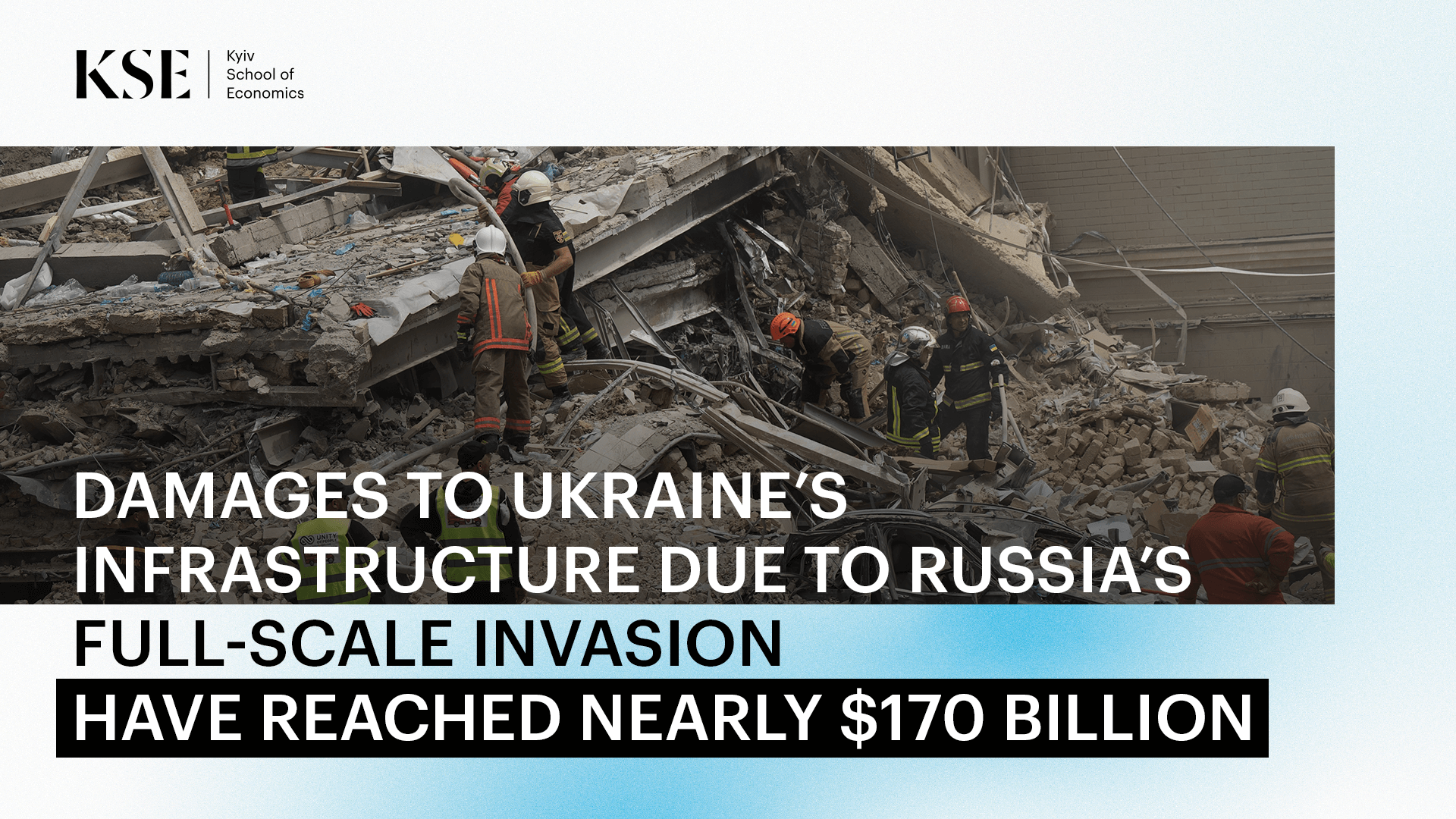- Kyiv School of Economics
- About the School
- News
- Damages to Ukraine’s infrastructure due to the war have risen to $170 billion — KSE Institute estimate as of November 2024
Damages to Ukraine’s infrastructure due to the war have risen to $170 billion — KSE Institute estimate as of November 2024
14 February 2025

The total damages inflicted on Ukraine’s infrastructure due to Russia’s full-scale invasion have reached nearly $170 billion. Since early 2024, this figure has increased by $12.6 billion due to continued destruction from missile strikes and hostilities. The most affected sectors remain housing, transport infrastructure, and energy.
The housing sector has suffered the most, with damages estimated at $60 billion. As of November 2024, 236,000 residential buildings have been damaged or destroyed, including 209,000 private houses, 27,000 apartment buildings, and 600 dormitories. The most affected regions include Donetsk, Kharkiv, Luhansk, Kyiv, Chernihiv, and Kherson.
Damages to transport infrastructure are estimated at $38.5 billion. More than 26,000 kilometers of roads have been damaged or destroyed, accounting for $28.3 billion in losses. Damages to railway infrastructure amount to $4.3 billion, port infrastructure — $1 billion, and aviation — $2 billion. Losses in private vehicles are estimated at $2.2 billion, with 260,000 cars damaged or destroyed.
Damages to Ukraine’s energy sector stand at $14.6 billion. Attacks have completely destroyed the Kakhovka and Dnipro hydroelectric power plants, the Trypillia and Zmiiv thermal power plants, a damaged or destroyed significant portion of major power generation facilities and also high-voltage substations, key oil and gas infrastructure.
Industry, construction, and services have sustained $14.4 billion in damages. Businesses have lost equipment, production facilities, and logistics assets. As of November 2024, almost 500 large and medium-sized private, and state-owned enterprises have been damaged or destroyed.
The agricultural sector has suffered damages of $10.3 billion. More than 130,000 units of agricultural machinery have been lost, along with 4 million tons of grain storage capacity and 16,000 hectares of perennial crops. Ukraine’s forests have also sustained significant losses—298,000 hectares have been damaged by hostilities and fires, with total estimated losses reaching $4.5 billion.
Damages to Ukraine’s education sector are estimated at $7.3 billion. More than 4,000 educational institutions have been damaged or destroyed, including 229 schools, 110 kindergartens, and 97 universities.
The healthcare sector has suffered $4.3 billion in damages. A total of 1,554 medical facilities have been damaged or destroyed, including 515 hospitals and 465 outpatient clinics.
Cultural, sports, and tourism infrastructure has suffered $4 billion in damages. A total of 3,921 cultural sites, 399 religious buildings, and 343 sports facilities have been affected.
Damages to housing and utilities infrastructure amount to $3.5 billion. Significant damage has been recorded in 925 boiler houses, 214 central heating stations, and over 354 kilometers of heating networks.
The digital infrastructure and telecommunications sector have sustained $1.2 billion in damages. Internet networks, mobile radio networks, and backbone communication lines have been severely affected. In de-occupied areas, network destruction has reached 100% in some locations, with thousands of mobile base stations destroyed.
The assessment was conducted by the analytical team of the Kyiv School of Economics (KSE) in cooperation with the Ministry for Development of Communities and Territories of Ukraine and the Ministry of Economy of Ukraine, and in collaboration with other relevant ministries and the National Bank of Ukraine.
This report was produced within the framework of the Digital Transformation Activity, with support from USAID and UK Dev. The creation of this report was made possible by the generous support of the American people through the United States Agency for International Development (USAID). The contents are the sole responsibility of the KSE Institute and do not necessarily reflect the views of USAID or the United States Government.This report has been funded by the UK International Development from the UK Government; however, the views expressed do not necessarily reflect the UK government’s official policies.
